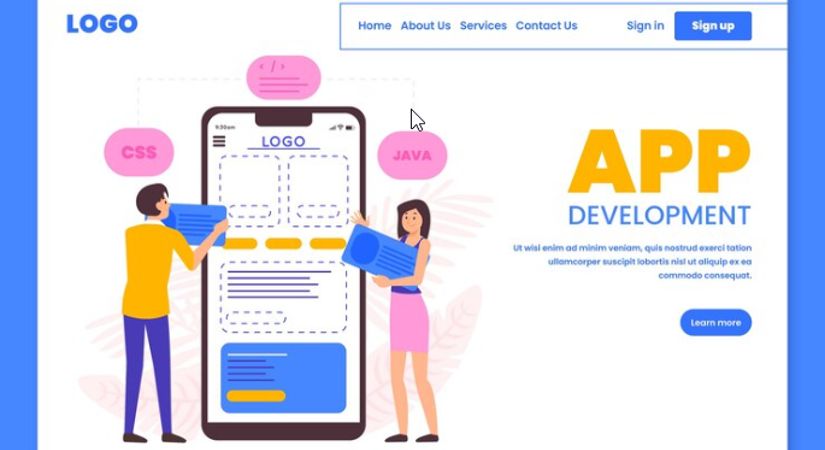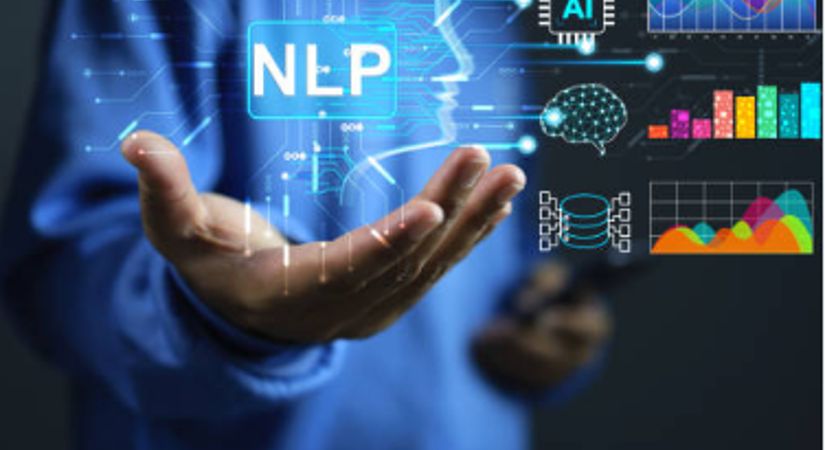How to Create an AI App: Step-by-Step Guide for 2026
85% of executives believe AI will give their businesses a competitive advantage. AI app development is transforming how we interact with technology by enabling applications to perform tasks that typically require human intelligence. Imagine apps that can learn, reason, solve problems, and understand language, significantly enhancing functionality and user experience.
Are you looking into creating your own AI-powered app but don't know where to start? You're in the right place. This guide will unravel the mystery of AI app development, offering a clear, step-by-step path from concept to deployment.
Here's what we'll cover:
Understanding AI Fundamentals: The building blocks of AI technology.
Choosing the Right AI APIs: How to select the best tools for your app.
Integration Tips: Seamless integration of AI APIs into your development process.
Development Best Practices: Optimizing performance and user experience.
Testing and Deployment: Ensuring your app is ready for the real world.
Case Studies: Success stories to inspire and guide your journey.
P.S., when it comes to choosing the right AI tools, API League is your go-to resource for powerful AI APIs, including machine learning models and natural language processing tools. Ready to dive in? Let’s get started!
What is AI App Development?
An AI app development company leverages cutting-edge technologies to create intelligent applications capable of performing tasks that typically require human intelligence. This includes automating complex processes, making informed decisions, and providing personalized user experiences.

Key Components of AI App Development
Machine Learning (ML): Enables apps to learn from data, improving accuracy and functionality over time without explicit programming.
Neural Networks: Mimic the human brain's interconnected neurons, allowing apps to recognize patterns and make decisions based on large datasets.
Natural Language Processing (NLP): Allows apps to understand, interpret, and respond to human language, making interactions more intuitive and efficient.
The Power of AI Apps
AI applications are revolutionizing industries by:
Automating Repetitive Tasks: AI handles mundane tasks, freeing up human resources for more strategic work.
Enhancing Decision-Making: AI analyzes vast amounts of data quickly, providing insights that drive better decisions.
Personalizing User Experiences: AI tailors interactions based on user behavior and preferences, increasing engagement and satisfaction.
The Importance of AI in App Development
Incorporating AI into applications is a game-changer for businesses. It revolutionizes user experiences and automates operations, making processes more efficient and effective. Here’s why AI is crucial in app development:
Key Benefits of AI in App Development
Enhanced User Experience: AI personalizes interactions, providing users with tailored recommendations and responses.
Automated Operations: AI handles repetitive tasks, reducing manual effort and increasing productivity.
Data-Driven Decisions: AI’s ability to process and analyze large datasets helps businesses make informed decisions quickly.
Innovation and Efficiency: AI introduces new functionalities, pushing the boundaries of what apps can achieve in terms of innovation and operational efficiency.
Real-World Applications
Healthcare: AI-powered apps can diagnose diseases, predict outbreaks, and provide personalized treatment plans.
In healthcare, AI not only aids in disease diagnosis and outbreak prediction but also streamlines administrative tasks, optimizes hospital operations, and facilitates remote patient monitoring.
Finance: AI helps in fraud detection, personalized banking, and automated trading systems.
Within finance, AI's role extends beyond fraud detection to include credit scoring, risk assessment, and portfolio management, revolutionizing how financial institutions operate and interact with clients.

Retail: AI enhances customer service through chatbots and provides personalized shopping experiences. In the retail sector, AI-powered recommendation engines not only personalize shopping experiences but also optimize inventory management and pricing strategies.
Moreover, AI-driven analytics enable retailers to forecast demand accurately and tailor marketing campaigns for maximum impact. These real-world applications underscore AI's transformative potential across diverse industries.
Market Growth and Opportunities in AI
The AI market is booming, with projections suggesting it will reach $1.3 trillion by 2030. This growth is driven by continuous advancements in AI technologies and their expanding application across diverse industries. Key drivers include:
Technological Advancements: Innovations in machine learning, neural networks, and NLP are making AI more accessible and powerful.
Industry Adoption: Sectors such as healthcare, finance, and retail are increasingly integrating AI to enhance their services and operations.
Investment Surge: Businesses are heavily investing in AI to stay competitive, leading to a surge in demand for AI solutions.
Integrating AI with API League
To harness the full potential of AI in your mobile app development too, it's essential to choose the right tools and resources. API League offers a comprehensive selection of AI APIs that can simplify this integration process.
Understanding AI Technologies
Various technologies play key roles in shaping the capabilities of intelligent applications. Here’s a breakdown of some fundamental AI technologies:
1. Machine Learning Types
Machine learning encompasses several approaches, and AI algorithms each tailored to specific application scenarios:
Supervised Learning: Involves training models on labeled data, where the algorithm learns to make predictions based on input-output pairs.
Unsupervised Learning: Focuses on finding hidden patterns and structures within unlabeled data, without specific guidance.
Reinforcement Learning: Relies on feedback from the environment to learn optimal behavior, where the algorithm aims to maximize rewards over time.
Each type of machine learning offers unique advantages and is suited to different use cases, ranging from image recognition to recommendation systems.
2. Neural Networks
Neural networks are a foundational concept in AI, inspired by the structure and function of the human brain. These networks consist of interconnected layers of nodes, or artificial neurons, that process data and learn to perform tasks by adjusting the connections between them.
Key components of a neural network or networks include:
Input Layer: Receives input data and passes it to the subsequent layers.
Hidden Layers: Intermediate layers that perform complex transformations on the input data.
Output Layer: Produces the final output or prediction based on the processed data.
By iteratively adjusting the connections (weights) between neurons during training, neural networks can learn to recognize patterns and make accurate predictions.
3. Natural Language Processing (NLP)
Natural Language Processing (NLP) enables machines to understand and interpret human language, facilitating communication between humans and computers. NLP techniques allow machines to analyze, generate, and respond to text in a way that is both meaningful and context-aware.

Key components of NLP include:
Tokenization: Breaking down text into smaller units, such as words or phrases, for analysis.
Named Entity Recognition (NER): Identifying and classifying named entities, such as people, organizations, and locations, within the text.
Sentiment Analysis: Analyzing the emotional tone of text to determine sentiment, such as positive, negative, or neutral.
NLP powers applications such as chatbots, virtual assistants, and language translation services, revolutionizing the way humans interact with technology.
Understanding these AI technologies is crucial for developers looking to harness the power of AI in their applications. By leveraging machine learning, neural networks, and NLP, developers can create intelligent systems that learn, adapt, and interact with users in sophisticated ways.
The AI App Development Process
In this section, we'll walk you through the essential steps of an AI app builder. From setting clear objectives to integrating AI seamlessly into your app, we'll provide practical insights to help you navigate the process with confidence.
Join us as we dive into the world of AI-driven applications and unlock the potential of intelligent technology.
Step 1: Define Objectives
Understanding the purpose and objectives of an AI-powered application is crucial for its successful development. Let's delve into the intricacies of defining objectives to ensure clarity and alignment with user needs.
Understanding the App's Purpose
Identify User Pain Points: Before diving into development, understanding the core purpose of the AI-powered application is essential. What problem does it aim to solve? By identifying the specific pain points or challenges faced by users, developers can tailor the app's functionalities to address these issues effectively.
Example Scenario: Consider a healthcare app designed to assist doctors in diagnosing medical conditions. The primary purpose of such an app would be to streamline the diagnostic process, reduce errors, and improve patient outcomes.
By leveraging AI technologies such as machine learning algorithms, the app can analyze patient data and provide accurate diagnostic recommendations in real time.
Articulating Goals and Expectations
Set SMART Goals: Once the app's purpose is clear, the next step is to articulate specific goals and expectations for its development. This involves defining the desired outcomes and performance metrics that will indicate the app's success.

Example Goals: In the case of the healthcare app, goals may include achieving a certain level of accuracy in diagnosing medical conditions, reducing the time taken for diagnosis, and improving overall patient satisfaction. These goals should be Specific, Measurable, Achievable, Relevant, and Time-bound (SMART) to ensure they are attainable and measurable.
Aligning with User Needs
Consider User Preferences: A crucial aspect of defining objectives is aligning them with the needs and preferences of the target audience. Developers must consider how the AI capabilities of the app can address user pain points and enhance their overall experience.
Target Audience: If the target audience for the healthcare app is busy healthcare professionals, the app should prioritize features that streamline their workflow and make their jobs easier. This could include intuitive user interfaces, quick access to relevant patient information, and personalized diagnostic recommendations based on individual patient data.
Defining objectives for an AI-powered application involves understanding its purpose, articulating specific goals and expectations, and aligning them with user needs.
Step 2: Data Collection and Preparation
In AI app development, data serves as the lifeblood that fuels the artificial intelligence part of machine learning models. According to Forbes, Data scientists spend an average of 60-80% of their time cleaning and preparing data for analysis. This highlights the critical importance of data quality in the success of AI projects.
Below are the crucial steps involved in collecting and preparing data for AI model training.
Identifying Data Sources
Exploring Data Diversity: Data can be sourced from various internal and external sources, ranging from structured databases to unstructured text documents and multimedia files. It's essential to explore diverse data sources to ensure comprehensive coverage and relevance to the app's objectives.

Internal Data Repositories: Organizations can leverage their internal databases, customer interactions, transaction records, and other proprietary data sources to train AI models. These data repositories offer valuable insights into user behavior, preferences, and historical patterns.
External Data Providers: Additionally, external data sources such as public datasets, APIs, social media feeds, and third-party databases can augment the app's data pool. Accessing external data enriches the diversity of the training dataset and enhances the model's generalization capabilities.
Data Cleaning and Preprocessing
Ensuring Data Quality: Before data can be used for model training, it must undergo a rigorous cleaning and preprocessing phase to ensure quality and consistency. This involves identifying and rectifying issues such as missing values, outliers, and inconsistencies in the dataset.
Data Normalization: Normalizing the data ensures that features are on a similar scale, preventing certain features from dominating others during model training. Techniques such as Min-Max scaling or Z-score normalization are commonly employed to normalize numerical data.
Handling Missing Values: Missing values in the dataset can adversely affect model performance. Various strategies, such as imputation techniques or deletion of missing records, can be employed to handle missing data effectively.
Feature Engineering
Enhancing Model Performance: Feature engineering plays a pivotal role in shaping the effectiveness of AI models. This process involves selecting or creating relevant features from the raw data to improve the model's predictive power and generalization capabilities.
Feature Selection: Identifying the most informative features from the dataset helps reduce dimensionality and computational complexity while retaining crucial information. Techniques such as correlation analysis, recursive feature elimination, or domain knowledge-based selection can aid in feature selection.
Creating New Features: In some cases, existing features may not adequately capture the underlying patterns in the data. Feature engineering techniques, such as polynomial expansion, binning, or text embedding, can be employed to create new features that better represent the underlying relationships in the data.
Step 3: Choosing the Right AI Techniques
In the vast landscape of AI development, selecting the appropriate techniques is akin to choosing the right tools for a specific job.
Let's navigate through the key considerations involved in choosing the right AI techniques for your application.
Understanding AI Paradigms
Machine Learning (ML): Machine learning algorithms enable computers to learn from data and make predictions or decisions without being explicitly programmed.
ML encompasses a wide range of algorithms, including supervised learning, unsupervised learning, and reinforcement learning. These algorithms excel at tasks such as classification, regression, clustering, and anomaly detection.
Deep Learning (DL): Deep learning is a subset of machine learning that uses neural networks with multiple layers to extract hierarchical representations of data. DL has revolutionized fields such as computer vision, speech recognition, and natural language processing by achieving remarkable performance on complex tasks.
Convolutional neural networks (CNNs), recurrent neural networks (RNNs), and transformers are popular architectures in deep learning. According to Research Gate, deep learning adoption has grown significantly in recent years underscoring the growing importance and relevance of deep learning techniques in various domains.
Natural Language Processing (NLP): NLP focuses on enabling computers to understand, interpret, and generate human language in a meaningful way. NLP techniques encompass tasks such as text classification, sentiment analysis, named entity recognition, machine translation, and text summarization.

Models like transformers, recurrent neural networks, and sequence-to-sequence architectures are commonly used in NLP.
Matching Techniques to Objectives
Task Relevance: The choice of AI techniques should align closely with the objectives and requirements of the application.
For instance, if the app involves image recognition tasks, deep learning models such as convolutional neural networks (CNNs) are well-suited due to their ability to extract features from visual data.
Conversely, for text-based applications like chatbots or sentiment analysis, natural language processing techniques like recurrent neural networks (RNNs) or transformers may be more appropriate.
Data Characteristics: The nature and characteristics of the data play a pivotal role in determining the suitability of AI techniques.
For structured data with clear patterns and relationships, traditional machine learning algorithms like decision trees, random forests, or support vector machines (SVMs) may suffice.
In contrast, unstructured data such as images, audio, or text often require the expressive power of deep learning models to extract meaningful insights.
Considerations for Model Selection
Model Complexity: The complexity of the AI model should be commensurate with the complexity of the task and the available computational resources. While deep learning models offer state-of-the-art performance on complex tasks, they often require significant computational resources and data for training.
For simpler tasks or resource-constrained environments, simpler machine learning models may be more practical.
Deep learning models often require substantial computational resources, including high-performance GPUs or TPUs for training and inference. As a result, organizations need to consider the cost and availability of computational resources when selecting AI techniques for their applications.
Scalability: Consider the scalability of the chosen AI techniques with respect to the volume of data and the expected growth of the application. Scalability ensures that the AI models can handle increasing data loads and user interactions without sacrificing performance or efficiency.

Interpretability: In certain domains such as healthcare, finance, or legal, the interpretability of AI models is crucial for trust, transparency, and regulatory compliance. While deep learning models may offer superior performance, they are often perceived as black boxes due to their complex architectures. In such cases, simpler machine learning models with transparent decision-making processes may be preferred.
Step 4: Model Training and Validation
Training an AI model is akin to sculpting a masterpiece; it requires meticulous attention to detail, iterative refinement, and a keen understanding of the underlying data.
Let's delve into the key steps involved in training and validating AI models for your application.
Training the AI Model:
Data Feeding: The training process begins by feeding the prepared data into the selected AI model. This data serves as the raw material from which the model learns to make predictions or decisions. The model iteratively adjusts its internal parameters based on the input data to minimize errors and improve performance.
Parameter Adjustment: During training, the model undergoes iterative optimization to minimize a predefined loss function. This involves adjusting the model's parameters, such as weights and biases in neural networks, to better fit the training data.
Techniques like gradient descent and its variants are commonly used to update the model parameters in a direction that minimizes the loss.
Cross-Validation and Testing
Assessing Generalization Performance: Cross-validation is a critical technique for assessing the generalization performance of the trained model. It involves partitioning the data into multiple subsets, training the model on different combinations of these subsets, and evaluating its performance on unseen data.
Cross-validation helps detect overfitting and provides a more robust estimate of the model's performance.
Data Splitting Strategies: When splitting the data into training, validation, and testing sets, various strategies can be employed. For example, a common approach is k-fold cross-validation, where the data is divided into k subsets, and the model is trained and evaluated k times, each time using a different subset as the validation set.

Another approach is the holdout method, where a portion of the data is set aside for testing after training the model on the remaining data.
Hyperparameter Tuning
Optimizing Model Performance: Hyperparameters are parameters that define the structure or configuration of the model, such as learning rate, batch size, and network architecture.
Hyperparameter tuning aims to find the optimal values for these parameters to achieve the best performance on the validation or test data.
Techniques like grid search, random search, and Bayesian optimization are commonly used for hyperparameter tuning.
Grid Search: Grid search involves systematically searching through a predefined grid of hyperparameter values and evaluating the model's performance for each combination. While grid search is exhaustive and guarantees finding the optimal hyperparameters within the specified grid, it can be computationally expensive, especially for large hyperparameter spaces.
Random Search: Random search randomly samples hyperparameter values from predefined distributions and evaluates the model's performance for each sampled configuration. Random search is more computationally efficient than grid search and often finds good hyperparameter configurations with fewer evaluations.
Step 5: Develop the User Interface
Creating a captivating user interface (UI) for your AI-powered application is akin to crafting a seamless experience, where every click, swipe, or voice command feels intuitive and purposeful.
Let's explore the key principles and strategies involved in developing a user-centric UI that seamlessly integrates AI functionality into AI application.
User-Centric Design Principles
Simplicity and Clarity: At the heart of user-centric design lies the principle of simplicity. The UI should be clean, intuitive, and free from unnecessary clutter, allowing users to navigate effortlessly. Clarity in design ensures that users can quickly understand the purpose of each element and how to interact with them.
Accessibility: Accessibility is paramount in ensuring that the UI is inclusive and usable by all individuals, regardless of their abilities or disabilities. This includes considerations such as providing alternative text for images, keyboard navigation options, and adjustable font sizes for readability.
Integrating AI Functionality
Seamless Integration: AI capabilities should be seamlessly woven into the fabric of the UI, enhancing rather than overshadowing the user experience. For example, voice commands can offer hands-free interaction, while chatbots can provide instant assistance and personalized recommendations based on user preferences.
Personalization: AI-powered applications have the unique ability to learn from user interactions and tailor experiences to individual preferences. By leveraging data insights, the UI can deliver personalized recommendations, content suggestions, and product offerings, enhancing user engagement and satisfaction.

Iterative Design Process
Continuous Improvement: UI development is an iterative process that relies on feedback from users to drive refinements and enhancements. Through user testing, observation, and feedback collection, developers can identify pain points, usability issues, and areas for improvement, iteratively refining the UI to better meet user needs.
Agile Methodologies: Agile methodologies such as Scrum or Kanban are often employed in UI development to facilitate rapid iteration and adaptation. By breaking down the development process into smaller, manageable tasks and regularly reviewing progress, teams can respond quickly to changing requirements and user feedback.
Step 6: Integration and Deployment
As your AI-powered application nears completion, the integration and deployment phase marks the culmination of your development efforts. This phase is crucial for ensuring that your AI models seamlessly integrate into the app's architecture and deliver on their promises.
Let's delve into the key considerations for integrating and deploying your AI app effectively.
Seamless Integration
Strategies for Integration: Integration involves incorporating the trained AI models into the app's existing architecture in a seamless manner. This may entail leveraging APIs (Application Programming Interfaces), SDKs (Software Development Kits), or developing custom integration solutions tailored to the app's specific requirements.
The goal is to ensure that the AI functionality complements the overall user experience without disrupting existing features or workflows.
API Integration: APIs provide a standardized way for different software components to communicate and exchange data.
By integrating AI models through APIs, developers can encapsulate complex functionality behind simple, easy-to-use interfaces, enabling other parts of the app to interact with the AI capabilities effortlessly.
Testing and Quality Assurance
Thorough Testing: Before deploying the AI app to production, it's essential to conduct thorough testing and quality assurance to identify and address any potential issues or bugs.
This includes functional testing to ensure that the app behaves as expected, performance testing to assess its responsiveness and scalability, and compatibility testing to verify its compatibility with different devices and platforms.

Quality Assurance Processes: Quality assurance processes help maintain the desired level of quality and reliability in the deployed app. This involves conducting rigorous testing across various scenarios, including edge cases and error conditions, to validate the app's functionality and performance under real-world conditions.
Continuous Monitoring and Maintenance
Ongoing Monitoring: Once the AI app is deployed, it's crucial to establish mechanisms for continuous monitoring and maintenance to ensure its continued performance and reliability. This includes monitoring key performance metrics, such as response times, error rates, and resource utilization, to identify any anomalies or performance degradation.
Handling User Feedback: User feedback plays a vital role in refining and improving the deployed app. By actively soliciting and responding to user feedback, developers can address usability issues, prioritize feature enhancements, and enhance the overall user experience.
Updating AI Models: AI models are not static entities but evolve over time as new data becomes available and user preferences change. As such, it's essential to establish processes for updating and retraining AI models periodically to ensure they remain accurate, relevant, and effective in addressing user needs and expectations.
Effective integration and deployment of your AI-powered application require careful planning, thorough testing, and ongoing monitoring and maintenance.
By following best practices and leveraging appropriate tools and techniques, you can ensure that your AI app delivers value to users and achieves its intended objectives.
Empowering Your AI Journey with API League
As you reach the end of this insightful journey into AI app development, you've gained invaluable insights into the intricacies of building intelligent applications.
Now equipped with a deeper understanding of AI techniques, data preparation, model training, and UI design, you're poised to embark on your own AI development endeavors with confidence.
Here are some key takeaways to remember:
Define clear objectives for your AI-powered application to align with user needs and business goals.
Collect and prepare data meticulously, ensuring its quality and relevance for training AI models.
Choose the right AI techniques based on your app's objectives and data characteristics.
Train and validate your AI models rigorously to ensure accuracy and effectiveness.
Develop user interfaces that prioritize simplicity, accessibility, and seamless integration of AI functionality.
As you continue your AI journey, consider the invaluable resources offered by API League to streamline your development process. API League provides a comprehensive suite of AI APIs empowering developers like you to create groundbreaking applications effortlessly.

Whether you're venturing into predictive analytics, sentiment analysis, or personalized recommendation systems for AI mobile apps, API League offers the essential building blocks to accelerate your AI projects. Unlock the full potential of artificial intelligence in your applications with API League and redefine the future of technology.
Visit our website for more information to get a quick start on your AI app development.
FAQs:
Q1: Can I build an AI on my own?
Ans. Building an AI app independently is indeed possible, albeit challenging. You'll need a solid understanding of AI concepts, programming languages like Python, and access to relevant datasets. Additionally, leveraging AI development platforms and frameworks can streamline the process, but expertise remains essential for effective implementation.
Q2: How much does it cost to develop an AI app?
Ans. The cost of developing an AI app varies significantly based on factors like project complexity, desired features, and development resources.
Typically, AI app development involves expenses such as data acquisition, model training, software development, and ongoing maintenance. Costs for AI software alone can range from a few thousand to several hundred thousand dollars, depending on the project scope and requirements.
Q3: Can OpenAI create an app?
Ans. OpenAI, as an organization focused on AI research and as an AI application development front, provides tools, libraries, and resources to facilitate AI app creation. While OpenAI offers powerful AI models like GPT (Generative Pre-trained Transformer), developers still need to integrate these models into their applications and tailor them to specific use cases.
Collaborating with OpenAI can enhance the app's AI capabilities, but developers are responsible for the app's development and deployment.
Q4: Is the AI app free?
Ans. Whether an AI app is free or not depends on various factors, including its purpose, functionality, and business model. Some AI apps may offer basic features for free, with premium features available through paid subscriptions or one-time purchases.
Others may operate on a freemium model, providing limited functionality for free and offering additional features at a cost. Additionally, some AI apps may be entirely free but supported by advertisements or sponsorships.
Q5: Is Google's AI free?
Ans. While Google offers various AI services and tools, many of them have free tiers or usage limits. However, for more extensive usage or access to premium features, users may need to pay additional fees. It's essential to review Google's pricing structure and terms for specific AI services to understand any associated costs.